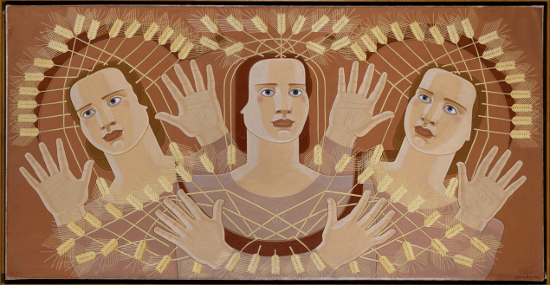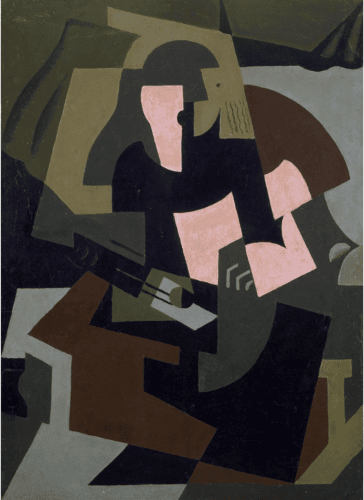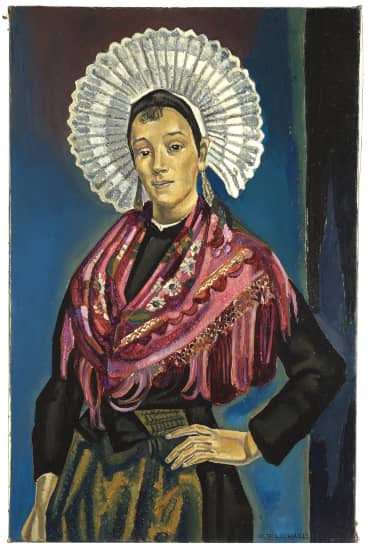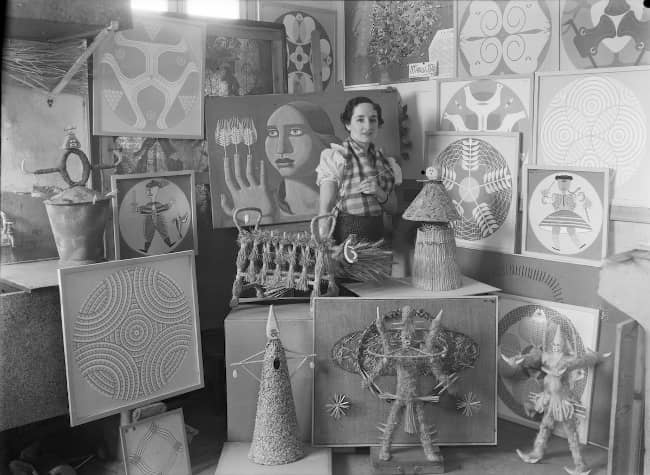
Women artists at the Reina Sofia museum
To continue this series highlighting artists that you may not know, and they can be discovered in Madrid, let’s focus on modern art and women artists at the Reina Sofia Museum.
Modern art offers more space to women artists than does the Fine Arts sector, which is easily explained historically. However, at the Reina Sofia Museum, the proportion of male painters represented is still much higher than for women, both in the museum’s permanent collection and in its temporary exhibitions ; a situation the museum has been trying to remedy for almost ten years now. Alongside the already famous Sonia Delaunay and Dora Maar, the museum also offers a fine overview of Spanish women artists; let’s zoom in on 4 artists you can discover there!
1. María Blanchard (1881-1932)

Born in Santander and died in Paris, María Blanchard is often described as a cubist artist, although she dedicated only 4 years of her life to this movement. In fact, the form of cubism she proposes is different from her contemporaries. It transforms our perception of reality, but remains figurative and easily recognizable. This is the case, for example, of “Woman with a guitar”, which she created when she met Juan Gris, the precursor of so-called “synthetic” cubism, which aimed to keep the object’s contours discernible despite abstraction. In the post-World War, in a Paris completely turned upside down, María Blanchard turned to figuration, and became interested in the human body, herself suffering from scoliosis that made her slightly humpbacked. In this way, she created works that were also collected by the Prado Museum, such as “La Boulonnaise”, crossing several artistic schools and today several Madrid museums.

2. Maruja Mallo (1902-1995)

Maruja Mallo is an artist whose life has been full of ups and downs. Born in Galicia, she studied in Madrid, where she developed her network in avant-garde circles, becoming close to Dalí and Buñuel. From her early days in Surrealism, she asserted her determination to defend the cause of women, notably joining the Sinsombreros (“hatless”) group, and played an active part in the educational missions of the Second Republic in Spain.
The Civil War forced her to flee to Argentina, where her style continued to evolve, influenced by her cultural discoveries. It was not until 25 years later that she returned to Madrid, where her work became known as “cosmic”. Indeed, this is the term that comes to mind when observing her mystical, colorful works, of which the Reina Sofia Museum owns no fewer than 22 pieces.
3. Rosario de Velasco (1904-1991)

Created in 1932, “Adam and Eve” is emblematic of Rosario de Velasco’s career. Despite treating a traditional subject in painting, the Madrilenian artist offers completely new colors, composition and viewpoint to approach this biblical theme. And yet, like María Blanchard before her, Rosario de Velasco wanted to return to a more classical style of painting. To this end, she approached the New Objectivity movement from Germany: a group that, after the brutality of the First World War, wished to return to figuration. Despite the success of this trend in Europe in the ’30s, the Nazi regime classified it as “degenerate art” and it gradually died out, although this did not prevent Rosario de Velasco from pursuing her career, and today her work is exhibited in the most prestigious museums of modern art.
3. Ángeles Santos (1911-2013)

Ángeles Santos is an artist who is sometimes called surrealist, sometimes constructivist, sometimes post-expressionist. Indeed, it’s hard to put her in any particular box, given the many artistic currents she crossed over the course of her very long life, still receiving awards at the age of 94.
Born in Portbou in 1911, she moved around a lot, and it was while attending a Catholic school in Sevilla that one of the nuns discovered her talents and suggested that she study art. It was then that she met the Surrealists and began to explore the twists and turns of the unconscious. At just 17, she made a name for herself at the Autumn Show in 1929 with a painting entitled “The World”. The intellectuals and critics of the time were amazed, and Ramón Gómez de la Serna even compared her to a “Saint-Theresa of painting, listening to the doves and stars dictate the touch of her brushes”.
These 4 artists are just a sample of the many women artists exhibited at the Reina Sofia Museum, which in recent years has shown a real commitment to collecting and exhibiting 20th-century women artists, as well as the creators of today.
They are all part of the rich cultural landscape of the city of Madrid, which, all around its Paseo del Arte, offers visitors a whole panoply of art history. Come and discover it with us during our free tour madrid !
And if you want to know more about the women artists of the Prado Museum, don’t miss our post!